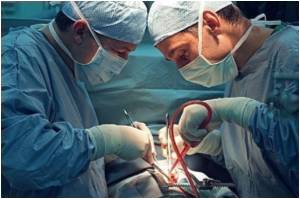Report says only 35% of anaesthesiologists are carrying out a simple procedure during high-risk surgery that can make a significant impact on how well patients recover

As a result of their findings, the authors of the study, led by Dr Maxime Cannesson, an Associate Professor of Anaesthesiology at the University of California, Irvine (USA), are calling for action at national and international level to ensure that cardiac output monitoring is carried out for all high-risk surgical operations.
The numbers of operations affected are significant. High-risk surgery represents about 10-14% of all the 240 million surgeries performed each year worldwide, meaning that about 30 million patients in the world are undergoing high-risk surgery every year. Examples of high-risk surgery include operations on the liver, pancreas, aorta (the largest artery in the body), most cancer surgery, and orthopaedic surgery, for instance on the spine or for hip fractures.
Dr Cannesson said: "Several studies have shown that when anaesthesiologists measure and then set goals for cardiac output during high-risk surgery, their patients will have fewer postoperative complications, a shorter stay in the hospital after the surgery, and fewer of them will die in the postoperative period. The idea is very simple: since oxygen is of major importance to the body when it is experiencing stress, as in the case of high-risk surgery, it seems logical that setting goals for maximising the delivery of oxygen to the tissues would improve patients' care. Oxygen is used by the cells in order to produce energy and to fight the stress. If the cells and tissues do not receive oxygen during the surgery, they are going to produce toxins, which will eventually worsen the situation and increase postoperative complications such as infection, kidney failure, pneumonia, and so forth. It's like running a marathon at high altitudes where there is very little oxygen: you get short of breath very quickly and soon you'll develop chest pain and expose your body to high risk if you do not stop running."
There are three main parameters that anaesthesiologists measure to check on oxygen delivery: levels of haemoglobin (the iron-containing, oxygen-carrying protein in red blood cells), oxygen saturation (how much oxygen the blood is carrying), and the cardiac output. Haemoglobin levels are usually checked regularly during high-risk surgery; continuous measuring of oxygen saturation is compulsory during anaesthesia in all European countries; but, as this study shows, cardiac output monitoring does not happen on a regular basis. "Yet, if cardiac output is not measured there is no way to know whether oxygen is delivered appropriately to the tissues or not," said Dr Cannesson.
"Our study shows that there is a need for action by national and international professional societies to ensure that cardiac output monitoring is used in clinical practice for these patients. There should be a European and US task force that comes up with recommendations regarding all haemodynamic monitoring [monitoring of blood flow] during surgery in order to improve the care of patients," he said.
Advertisement
Dr Cannesson said: "The last reason is interesting given that nearly all of them say that they know that oxygen delivery is of major importance and that cardiac output is involved in oxygen delivery!"
Advertisement
Now Dr Cannesson and colleagues are running a multi-centre study in California focusing on the impact on patient care and postoperative outcome of the implementation of guidelines and checklists for monitoring blood flow during high-risk surgery.
"Medical researchers are very good at finding the mechanisms underlying various conditions and developing research programmes aimed at developing better treatments. But our research shows that a crucial aspect of this is lacking: the delivery to the patient. Researchers and international professional societies should also be focusing on ensuring that when a treatment is appropriate for a condition or a situation, that this treatment is actually applied to the patient."
Source-Eurekalert












